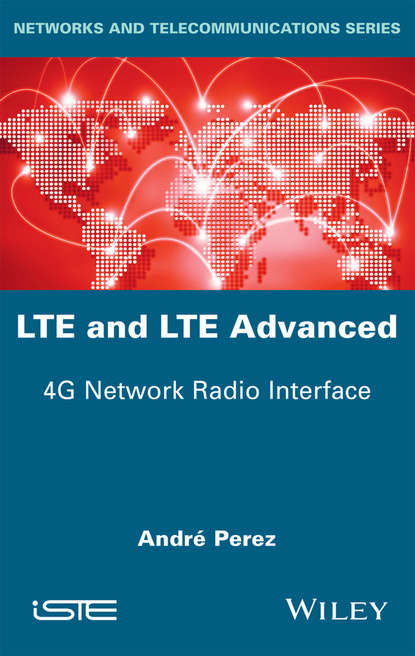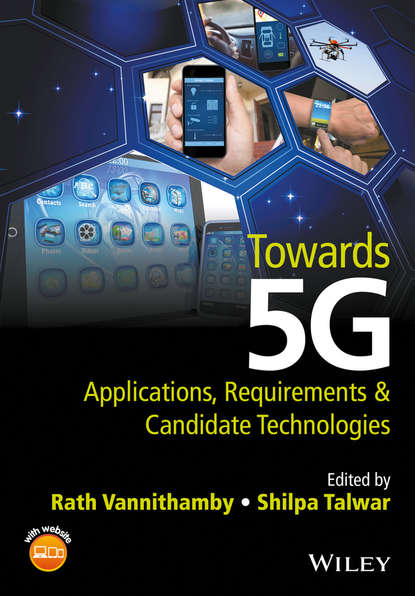Книга "Backhauling / Fronthauling for Future Wireless Systems" посвящена проблеме разработки инновационных решений для бэкхолинга и фронтхолинга в ультрагустонасыщенных гетерогенных сетях. Авторы, представители научного сообщества и индустрии, анализируют технические вызовы и последние достижения в разработке инфраструктуры для будущих коммуникационных систем, таких как 5G. Книга рассматривает различные типы технологий и топологии для бэкхолинга и фронтхолинга, а также представляет реальные примеры применения и случаи использования. В книге также рассматриваются вопросы стандартизации и организации исследований в данной области. Книга организована логично - авторы начинают с обзора и переходят к более конкретным темам, рассматривая вопросы с нижних до верхних уровней. В целом, книга представляет собой полное исследование по разработке эффективной инфраструктуры для бэкхолинга и фронтхолинга в будущих коммуникационных системах.
Новая книга, которую вы еще не видели. Просто сделай рерайтинг этого описания:
The recent widespread adoption of mobile internet together with the emergence of numerous "smart" applications has resulted in the explosive growth in mobile data traffic over the past few years, a trend that will no doubt continue to unfold into the future due to corresponding emerging demands to connect devices, both human and machine alike, and drive new applications.
Accordingly, the widespread uptick in mobile data demand poses substantial questions as we look to develop the underlying technology to allow us to accommodate this growth now seen in 4G wireless systems, something that must form a prerequisite for delivering the ubiquitous mobile service experience we have come to expect in the age of smartphones. There is a clear sense among many industry practitioners that the need for relevant technological advancement here is paramount to pulling off the next logical leap in wireless revolution.
This book's principal focus is smart backhaul / fronthhaul research, that aims to address the visceral and presently pivotal challenge created by the recent evolution in mobile communication industry design for navigating the exploding transfer of data voluminous throughout this era of "connected" devices, presenting essential guidelines and a platform for engaging academic, industrial, and regulatory efforts in this multifaceted effort.
Specifically, the book's primary goals are four-fold: (i) Articulate the currently existing and potential future state of environmental conditions for network backhaul infrastructure; (ii) Address the technological, architectural and engineering principles that can empower 5G handset and network infrastructure; (iii) Evaluate the most appropriate technological options to realize future 5G systemgoals, including Ultra Dense Networks (UDNs). (vi) Identify open issues and future directions in providing ubiquitous access to high speed data across heterogenous networks in the communication era.
Электронная Книга «Backhauling / Fronthauling for Future Wireless Systems» написана автором Группа авторов в году.
Минимальный возраст читателя: 0
Язык: Английский
ISBN: 9781119170358
Описание книги от Группа авторов
The recent widespread use of mobile Internet together with the advent of numerous smart applications has led to the explosive growth of the mobile data traffic in the last few years. This momentum of mobile traffic will continue due to the emerging needs of connecting people, machines, and applications through mobile infrastructure. As a result, the current and projected dramatic growth of mobile data traffic necessitates the development of fifth-generation (5G) mobile communications technology. As a result, there is significant interest in the development of innovative backhaul and fronthaul solutions for ultra-dense heterogeneous networks. This book brings together mobile stakeholders from academia and industry to identify and promote technical challenges and recent results related to smart backhaul/fronthaul research for future communication system such as 5G. Moreover, it presents a comprehensive analysis on different types of backhaul/fronthaul technology and topology. It considers already available topology for backhauling/fronthauling and explains all fundamental requirements for deploying future smart and efficient backhauling/fronthauling infrastructure from an architectural, technical and business point of view and presents real life applications and use cases. Expanding on standardization activities, this book consists of multiple channels on specific research topics. The chapters are logically organized as the authors approach the subject from overview to specifics and from a lower to higher layer direction.



















